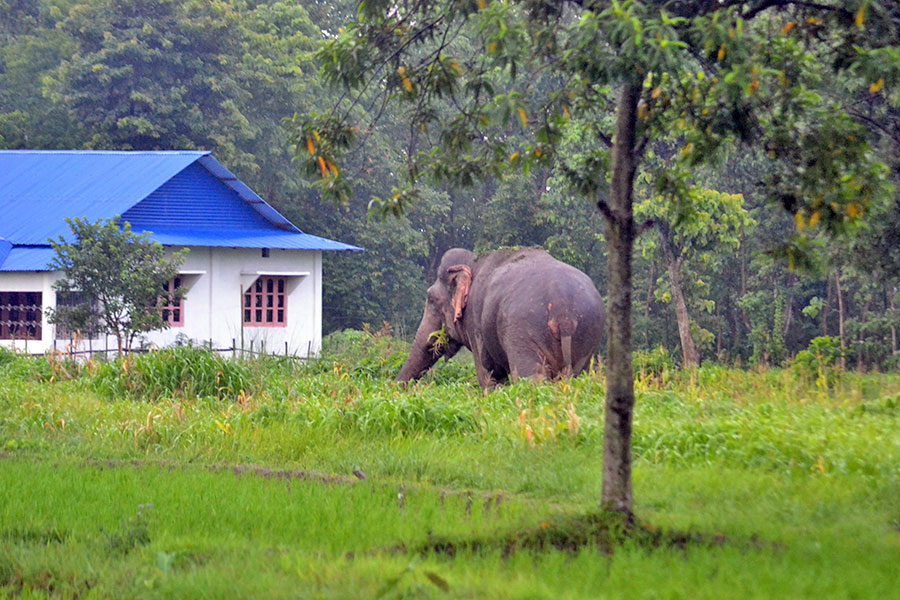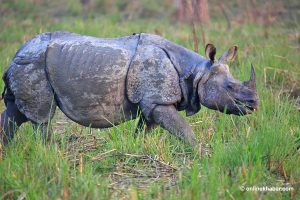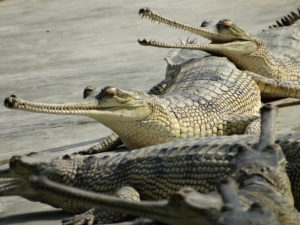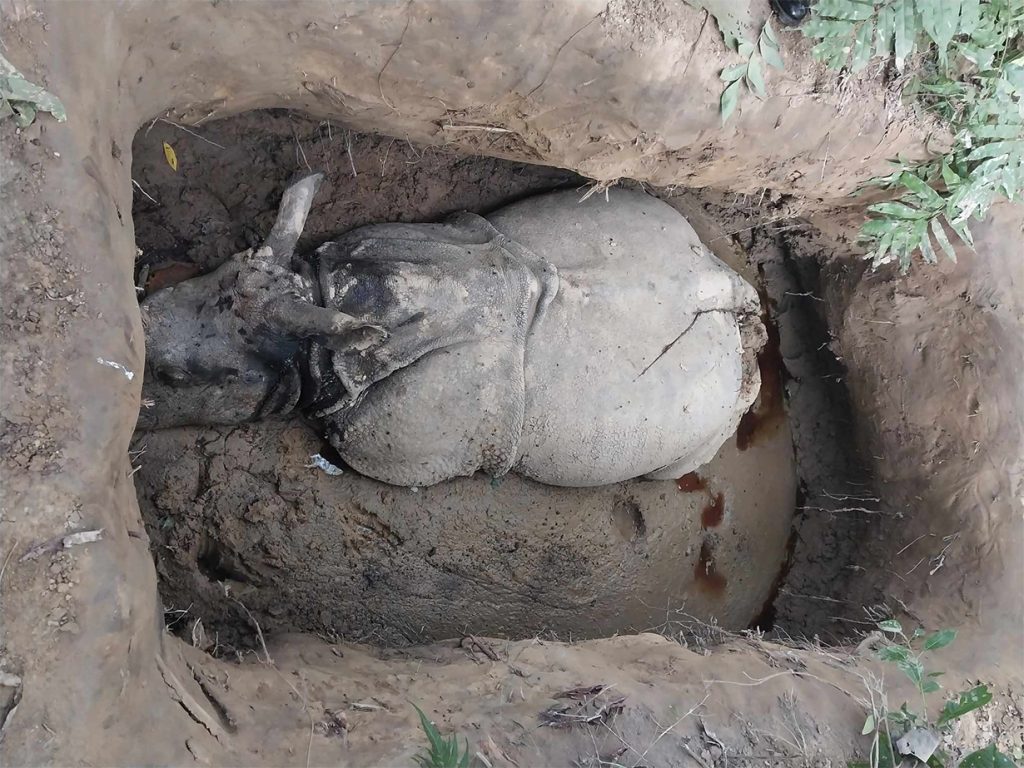
The committee assigned to investigate the killing of two rhinos in Chitwan National Park has raised concerns about the park’s security.
The committee was formed on November 18 under the leadership of Bed Kumar Dhakal, the chief conservation officer of Chitwan National Park after the two rhinos were killed inside the national park using traditional methods by trapping them in a pit.
The committee’s report states that the killing happened due to ineffective patrolling around the national park, indicating insufficient efforts and suggesting a need for improved security measures.
According to the report, a significant portion of the patrolling efforts was concentrated on the coastal area of the Rapti River. Consequently, the core area and the rhino’s habitat did not receive adequate attention.
Furthermore, the report highlights a deficiency in innovative strategies for poacher control, long-range patrol, informer management, and information collection. It suggests a need for fresh and effective approaches in addressing these aspects of park security.
The report also points out a lack of monitoring for an individual who had previously been imprisoned for poaching.
Poachers using old ways
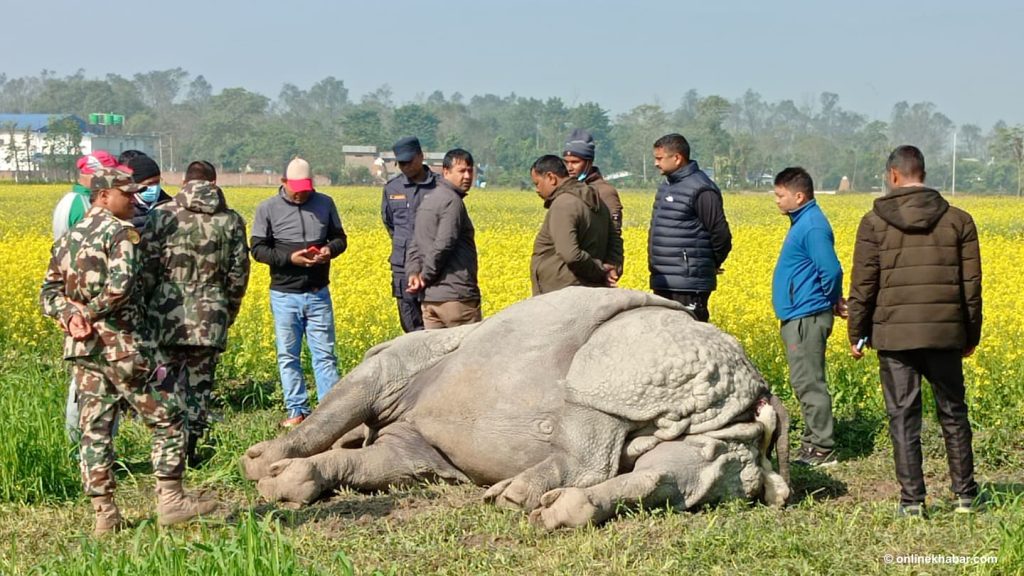
The report states a six-year-old female rhino was trapped in a pit measuring 2.6 metres in length, 1.1 metres in width, and 1.5 metres in depth, which had been dug by poachers. Likewise, an 18-year-old female rhino was also trapped similar a pit measuring 2.5 metres in length, 1.4 metres in width, and 1.5 metres in depth.
Investigations have revealed that the larger rhino fell into the pit initially, and a week later, the smaller one also became trapped in the same trap.
The larger rhino sustained fatal injuries, including a broken neck and ribs, resulting in its death. On the other hand, the smaller rhino did not die immediately upon falling into the pit, according to the report. Poachers shot the smaller rhino from a close distance and used a sharp weapon to kill it.
The committee says the poachers had set up a makeshift shelter near the pit site, evident from the presence of firelighters, pieces of clothes, and water bottles. The poachers then cut the rhino horns and cleaned them.
The committee is surprised how the park administration remained uninformed throughout the entire incident. According to the report, the poachers had dug seven pits inside the park, a process that spanned over 20 days.
The rhinos were discovered dead in the pits only during a search operation initiated to locate the missing elephants of the park. According to park officials, the rhinos had been killed 20 days before the discovery. The report highlights that no park officials reached the site even 20 days after the incident occurred.
Recommendation
The committee has called for an immediate sweep operation across the entire park area before January 15, 2024, to prevent further damage and has urged the submission of a report on the current situation to the department.
To control criminal activities originating from the Chure area and Khare Khola, the committee recommends the installation of surveillance cameras and wildlife monitoring cameras in sensitive areas.
Furthermore, the committee has brought to light the issues of a significant number of staff vacancies within the park, a lack of motivation among the existing staff, and the practice of overhauling the entire team during transfers or changes in rank within the Nepali Army.
The committee has also asked the park to enhance access to the island area and sensitive regions like the Temple Tiger, as well as to improve patrolling effectiveness. The report also recommends organising elephant patrols on a twelve-month cycle.
To bolster rhino protection efforts, the report proposes the activation of community-based anti-poaching units, the mobilisation of residents for regular patrolling, and coordination with buffer-zone community forest and consumer committees.
Recognising the sensitivity and potential dangers in the island of Narayani River and the coastal area west of Rapti River, particularly from a security standpoint, the report suggests constructing mounds to shield these areas from floods and implementing regular patrols in these locations.
Additionally, as wild animals may face challenges accessing grasslands, the report advises immediate cleaning and management of these areas.
Eight busted
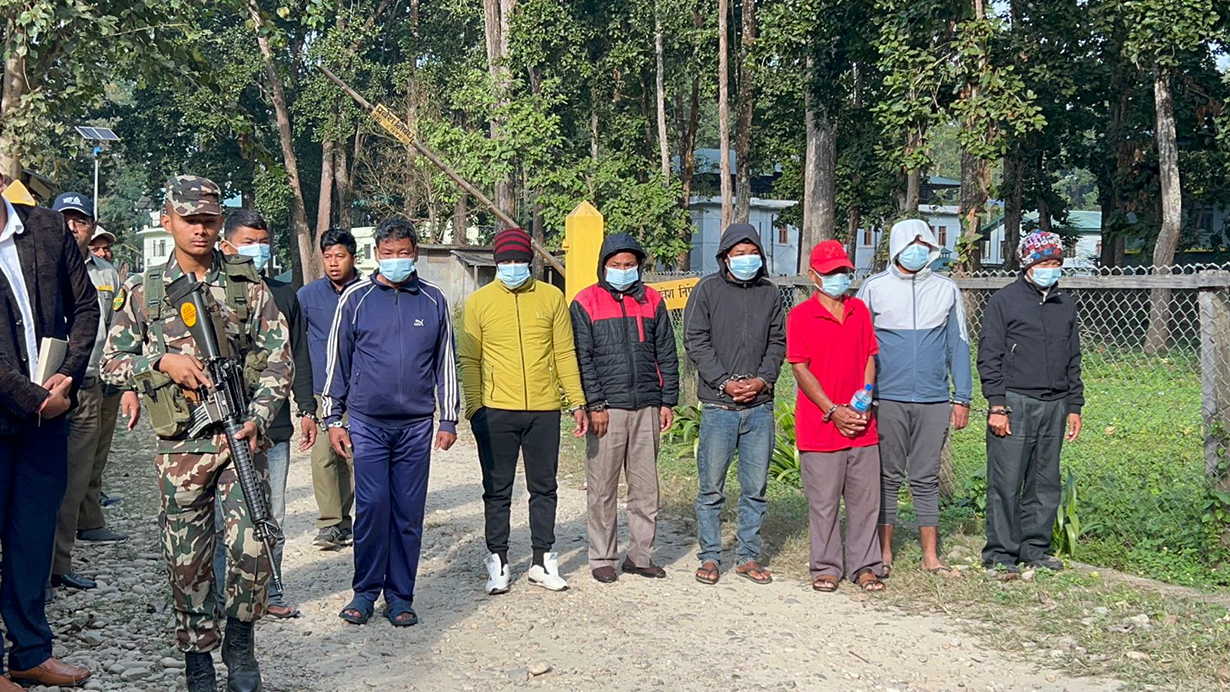
After 11 days following the incident, the park arrested eight individuals in connection with the killing of the rhinos. The park administration says that the investigation indicates their involvement in various roles, ranging from killing the rhinos to smuggling its horns.
Ramesh Khati, Shumsher Theeng, and Sita Ram Theeng are believed to be the masterminds who were helped by Aitey Singh Moktan, Oon Bahadur Syangtan, and Indra Bahadur Tamang. Arjun Roka and Dhan Bahadur Gurung were also arrested for helping the poachers sell the horns.
11 rhinos killed in four years
There are reports poachers killed as many as 38 rhinos in a year during the armed conflict in Nepal. This was due to a reduced army post during the time.
In recent years, wildlife poaching has decreased. In some years, the park celebrated zero poaching years.
In the fiscal year 2018/19, concerns were raised by the public when 43 rhinos died due to natural causes. Some incidents fueled suspicions that smugglers might have been involved in the deaths of the rhinos.
According to the park, from 2015 to 2020, only one rhino was killed by poachers. However, from the fiscal year 2020/2021, poachers became relatively more active, resulting in the killing of one rhino each year.
In the fiscal year 2020/21, poachers killed four rhinos, followed by two in 2021/22, two in 2022/23, and two in the current fiscal year 2023/24. In total, over the last four fiscal years, 11 rhinos were killed by poachers.






